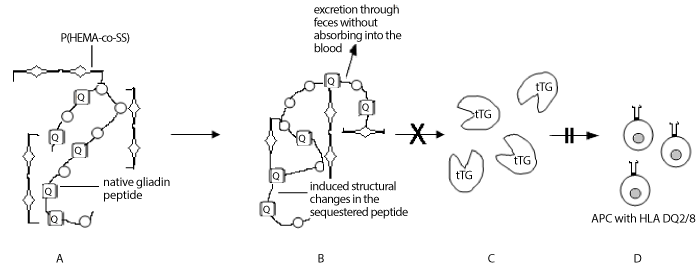
 |
| Figure 5: Schematic illustration of gliadin sequestering by Polyhydroxyethylmethacrylate-co-styrene polymer. Polyhydroxyethylmethacrylate-co-styrene (P(HEMA-co-SS)) polymer interacts with the gliadin peptides at gastric pH 1.2 and intestinal pH 6.8, inducing structural changes in the peptide and also form larger aggregates. tTG fails to recognize structurally changed peptides and therefore, further development of CD pathogenesis pauses. On other hand, the polymer sequestered peptides eliminate from the body through feces without getting absorbed into the blood. |